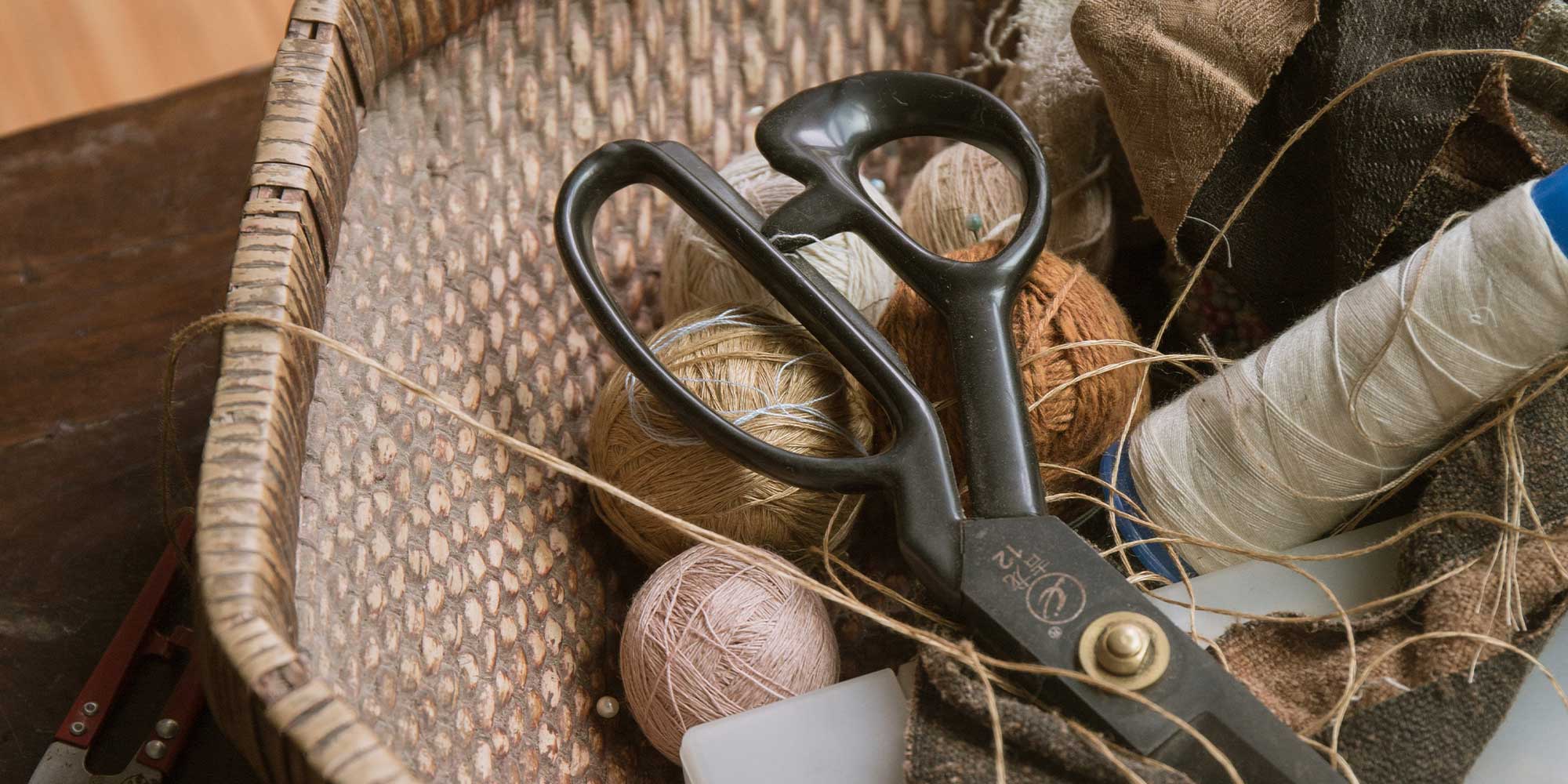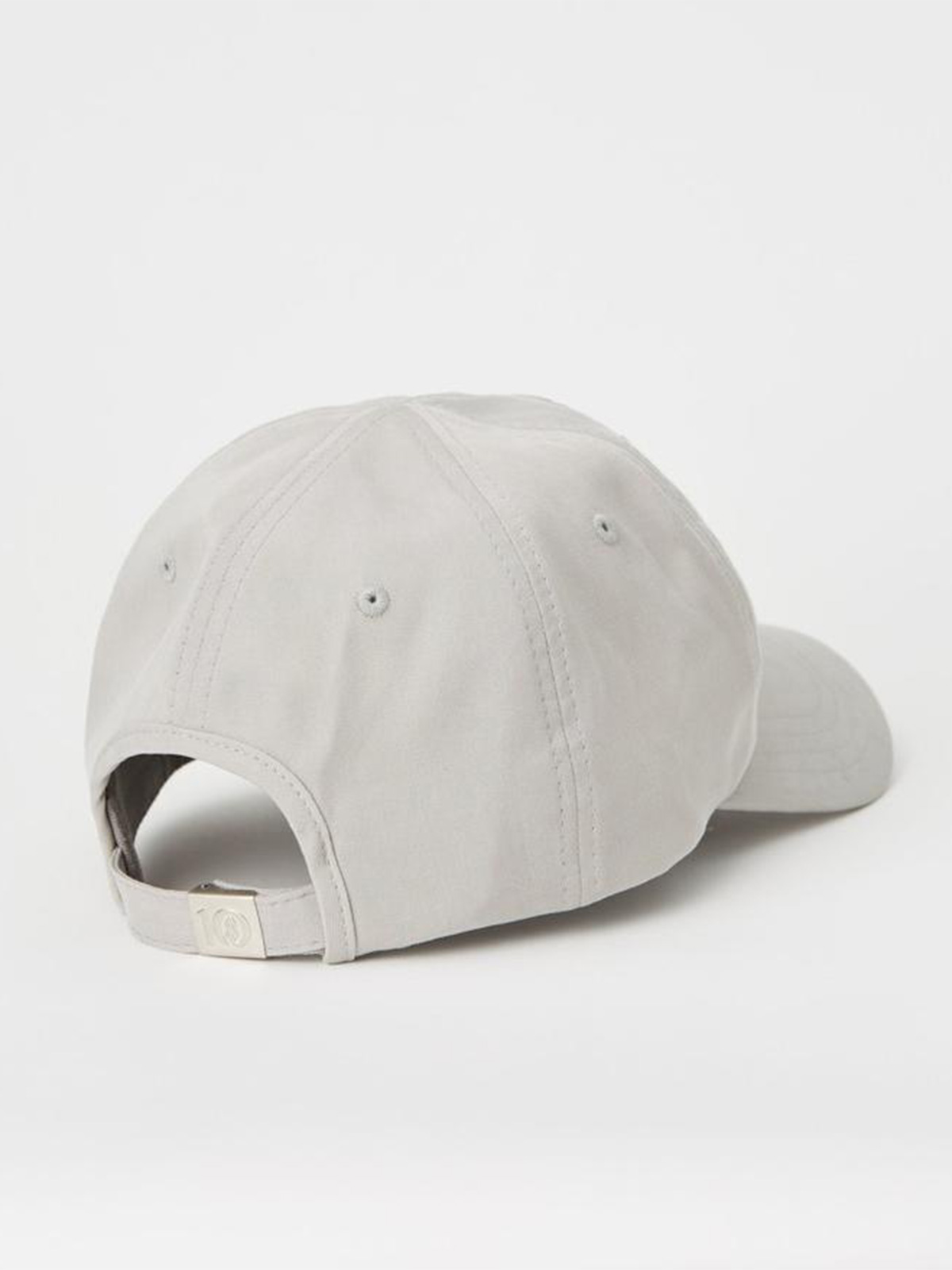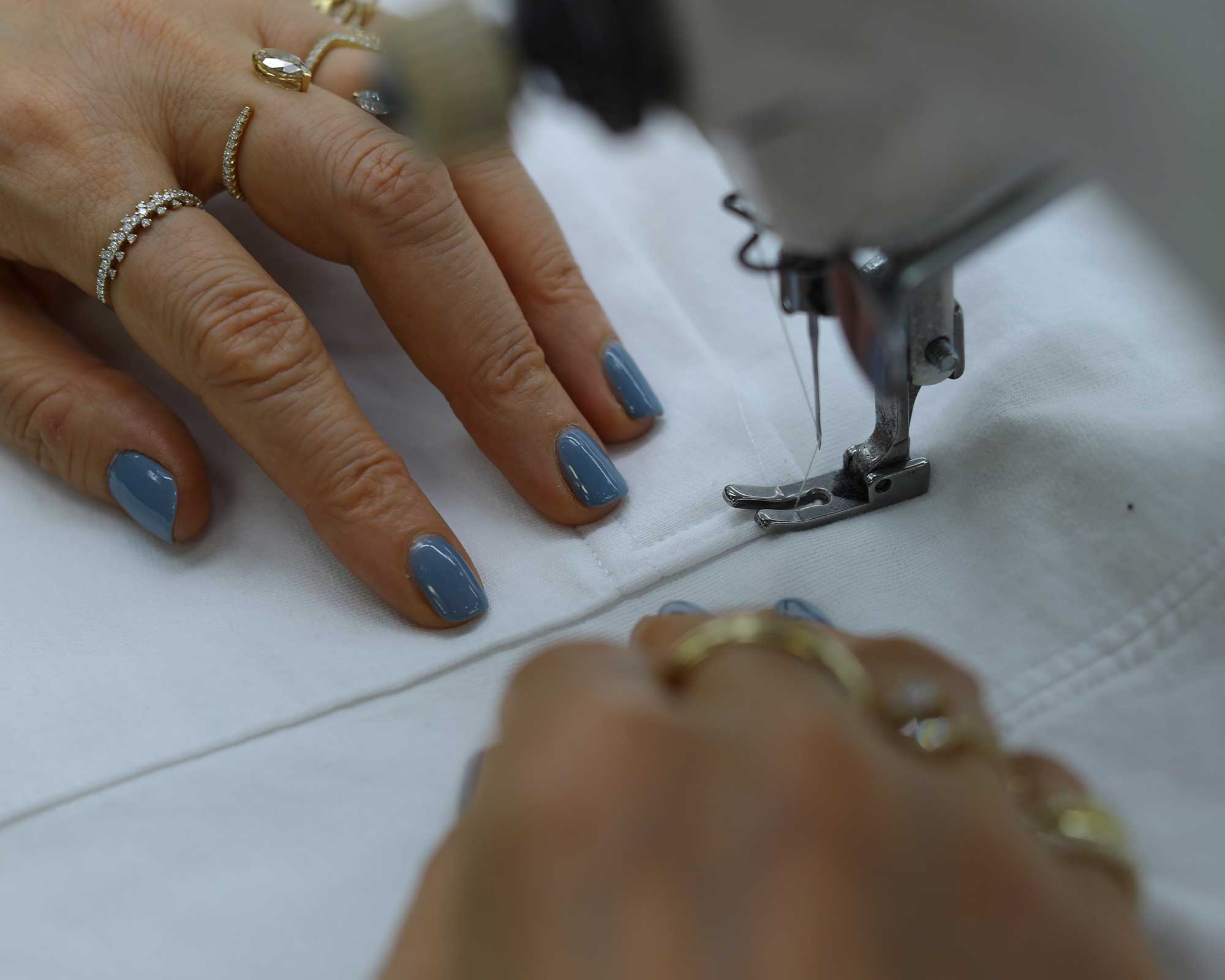We share with you our favourite online resources to learn how to fix, stitch, and make your own clothes.
The importance of sewing skills to more sustainable fashion shouldn’t be underestimated. Knowing how to stitch up a hole, take up a hem or reattach a zip can help prolong the life of the clothes you already own, while understanding how to make your own garments and accessories allows you to opt out of fast and mass-produced fashion and create your own unique wardrobe.
Not only that, but it can also help relieve stress, make us feel more positive, and improve hand-eye coordination.
Sewing takes a bit of patience and practice to master, but we encourage everyone who is able to at least learn how to patch a hole.
Here we’ve curated our favourite resources from around the internet to help you learn how to mend and make your clothes.
The basics
In this section, you’ll find out what to have on hand and where to start learning.
Assembling your sewing kit
There are plenty of readymade sewing kits you can buy, but you could also assemble your own by reusing an old pouch or glass jar and filling it with the tools you need. Here’s what we recommend you have in your basic sewing kit:
- Pins
- Hand sewing needles in different sizes (finer for light fabrics such as silk, thicker for heavy materials like denim)
- Thread
- Measuring tape
- Fabric scissors
- Seam ripper
Remember, these items are the basis of a good sewing kit—as you learn and find out what kind of sewing you enjoy or do the most, you’ll be able to add more tools that work for you.
If you want to make your own clothes then you’ll also need to buy fabrics and hardware, such as buttons, zips, and trimmings. We recommend checking out your local fabric shop first. Otherwise, many websites sell fabrics, including sustainable and ethical fabrics. You can also reuse old clothes, bedsheets, or towels—whatever materials you have lying around.
Do I need a sewing machine?
Good question. It depends on your needs. If you’ll occasionally be doing the basics, such as darning socks, patching holes, and sewing a hem, the answer is no as you can do these tasks by hand.
But if you want to start making your own clothes, using patterns or handling heavy-duty fabrics like denim, then you’ll need to invest in a sewing machine. A good one is an investment and can last you a long time (I mean, my mum still has hers, which she bought when she was 20). And it’ll take a bit of practice to get used to it, but persevere, because once you can sew with a machine, a whole new world of possibilities will open to you.

Online sewing classes
Learning how to sew has become so much easier thanks to the internet. There are many free online sewing classes and tutorials that you can take at your own pace and from the comfort of your own home:
- Made to Sew is a fantastic YouTube channel that has loads of tutorials and sewing lessons
- The English Tailor is another sewing YouTube channel that focuses on menswear
- Anita from Anita by Design teaches beginners how to master the basics of garment sewing
You’ll also find plenty of sewing classes on Skillshare or Udemy.
Mending your clothes
If you’re new to sewing, start small and get used to the needle and thread by working on a few easy mending projects. Prolonging the lives of our clothes is one of the most sustainable things we can do for our closets. Plus, knowing how to patch a hole, replace a button, or sew a hem are valuable skills for everyday life.
Patch a hole
We all know that dreadful feeling when you feel your clothes snag on something sharp, and you look down to see a hole or tear. But repairing a hole is a quick job that anyone can learn to do.
Mend a seam
Learning how to sew a seam that has ripped can be a game-changer. Once you know how you’ll have no reason to toss your favourite shirt or dress—just fix the ripped seam quickly and easily.
Replace a button
Replacing a button on a shirt or a dress is one of the easiest things you can sew. Even if you decide to stop reading this article right now, at least go learn how to sew a button on.
Sew a hem
Ever bought trousers only to realise they were a tad too long? When that happens, knowing how to take up a hem is essential. You could also take your pants to get tailored, but doing it yourself only takes a few minutes and is way more affordable. If you don’t have a machine, you can even sew your hems by hand.
Repair ripped jeans
Next time you rip your jeans, easily repair them by stitching or darning the holes, or even applying a patch for a unique look.
Darn socks
Holes in socks are annoying, especially if they happen often. Resist the urge to go out and buy a new pair and instead learn how to darn them. Then you can put on Netflix in the background and darn a few socks at a time.

Upcycling or making your own clothes
You’ve made it all the way down here, so now it’s time to start actually making your clothes.
First, you’ve got to learn how to use patterns and some basic sewing terms so you can decipher tutorials more easily.
When it comes to finding patterns, you’ll find plenty online, and many sewing blogs share their patterns with their community. We also recommend checking out Peppermint Magazine and Seamwork, which both have an extensive selection of cool and contemporary designs. You can also look on eBay, which has lots of old patterns and is a goldmine if you love vintage silhouettes.
Need inspiration? Here are some of our favourite DIYs to make or upcycle your own clothes:
- Quick Linen Hair Scrunchies – Collective Gen
- Masculine Pants – Cornelius Quiring
- Slip Dress with Leg Splits – The Essentials Club
- Simple Bucket Hat – The Essentials Club
- Button Down Shirt – Tock Custom
- Linen Culottes – The Essentials Club
- Linen Robe – Collective Gen
- Wrap Skirt – Rosary Apparel
- Off the Shoulder Crop Top – MYSTYLEDIARYY
- How to Knit a Sweater – Well-Loved Knits
- Gathered One Shoulder Top – The Essentials Club
- High-Waisted Pants – Tint of Mint
- Overall Jumpsuit from Scratch – Jess Dang
- Custom Overalls – Brit + Co



















